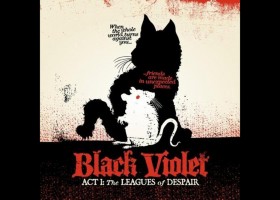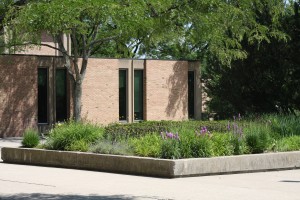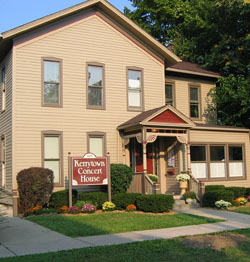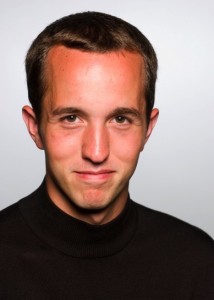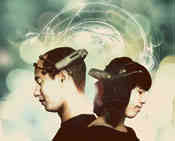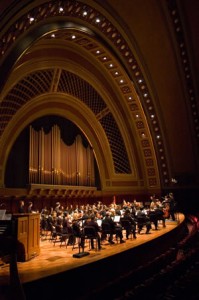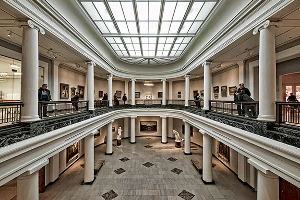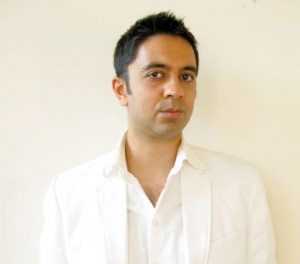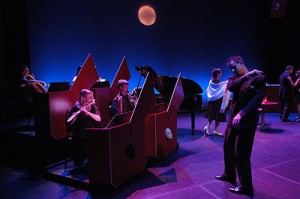
Last Tuesday, April 16, I trekked to Snyder Hall on the campus of Michigan State University in East Lansing, MI to see a performance by the Musique 21 ensemble, an immersive ‘Theatre of Music’ Production entitled Drunken Moon. The piece was conceived and created by conductor Kevin Noe and composer Kieren MacMillan, and features the merger of MacMillan’s eponymous monodrama for two voices with an English version of Arnold Schoenberg’s legendary Pierrot Lunaire.
Drunken Moon is more than a concert performance, it is a theatrical unfolding where the music and storyline are deeply intertwined and overlap on many occasions. I chose the descriptor ‘immersive’ deliberately, because Drunken Moon is more inviting to its audience than standard chamber operas. This is the touch of Kevin Noe, who has become renowned for his innovative programming with the Pittsburgh New Music Ensemble. In fact, Drunken Moon began as a PNME production, one of that group’s many fully staged programs, which push the boundaries of traditional concert presentation to create an audience experience that is undeniably memorable and powerfully meaningful.
Even though he was armed with students from MSU’s College of Music, Maestro Noe’s designs hit their mark Tuesday night. The show began immediately as the audience entered the theatre, in that the performers and actors were dancing, drinking and chitchatting in an imagined bar, ‘La fin bleu’, set up on the stage. Walking in on the onstage commotion like this set a refreshing and relaxing tone, at least compared to the prescribed ceremony of most Classical or Contemporary music concerts. Although the ‘Fourth Wall’ was not manipulated to any extreme, the attitude of the performance made observing Drunken Moon feel like being a part of it in some small way.
The intimate audience experience I enjoyed Tuesday night was not only a product of the small theater, sets, costumes, lighting and music. My compatriots in the audience and I were drawn into the performance by the stellar acting and singing of soprano Lindsay Kesselman and baritone Robert Peavler who brilliantly portray the main characters in Drunken Moon – dubbed only “she” and “he”. The couple’s interaction is the focal point of the performance’s narrative and the link that connects MacMillan’s Drunken Moon with Pierrot Lunaire.
